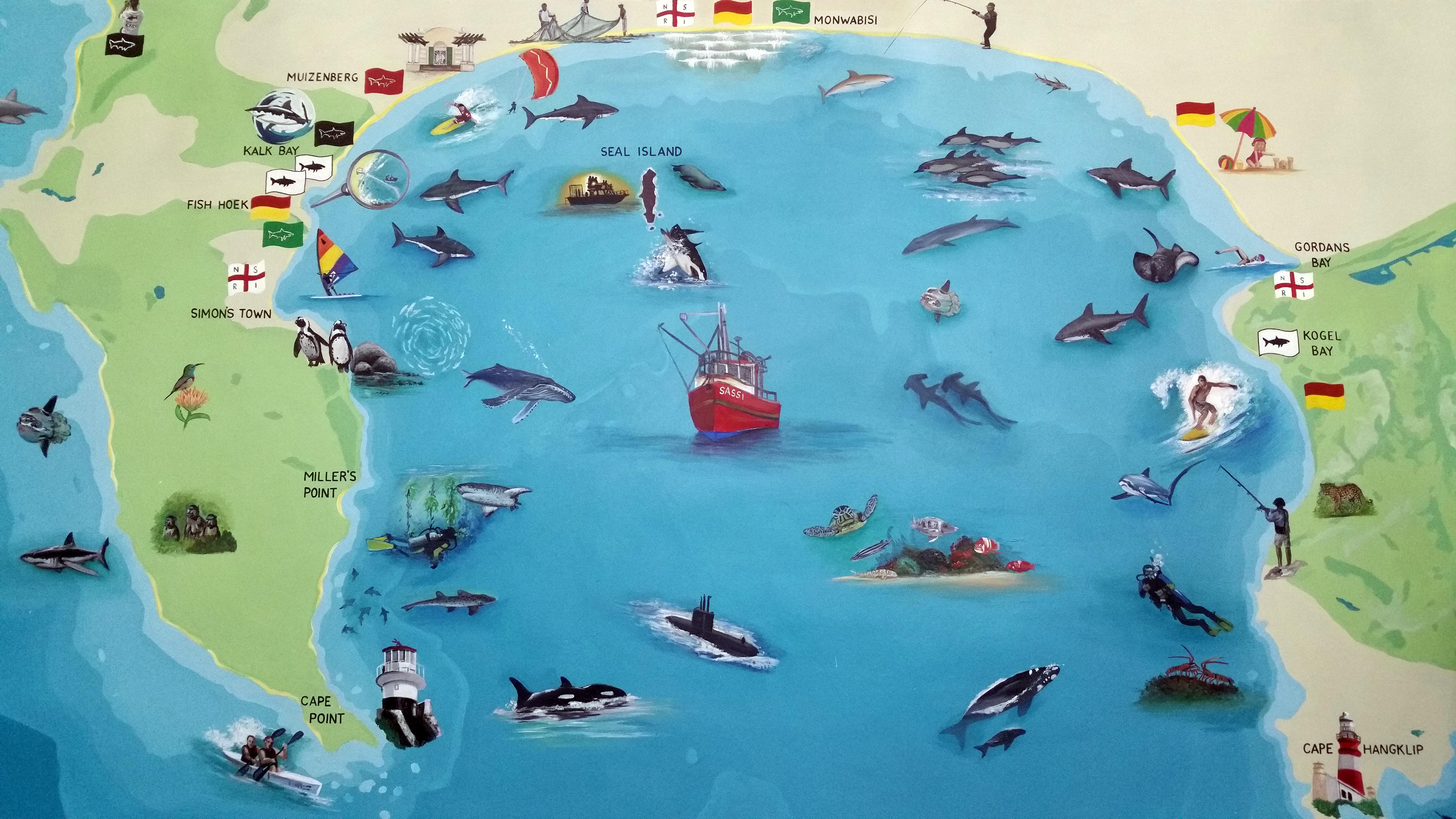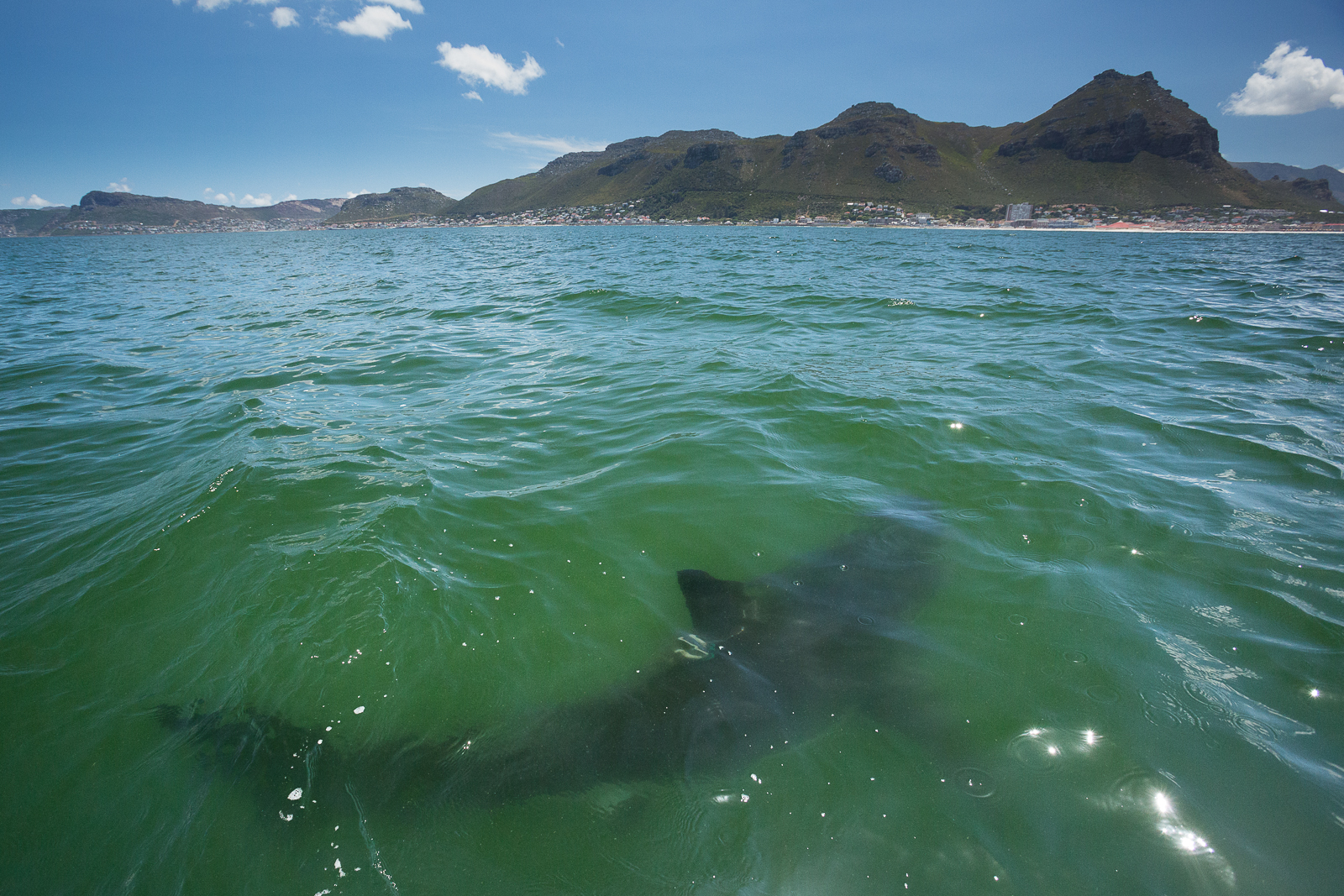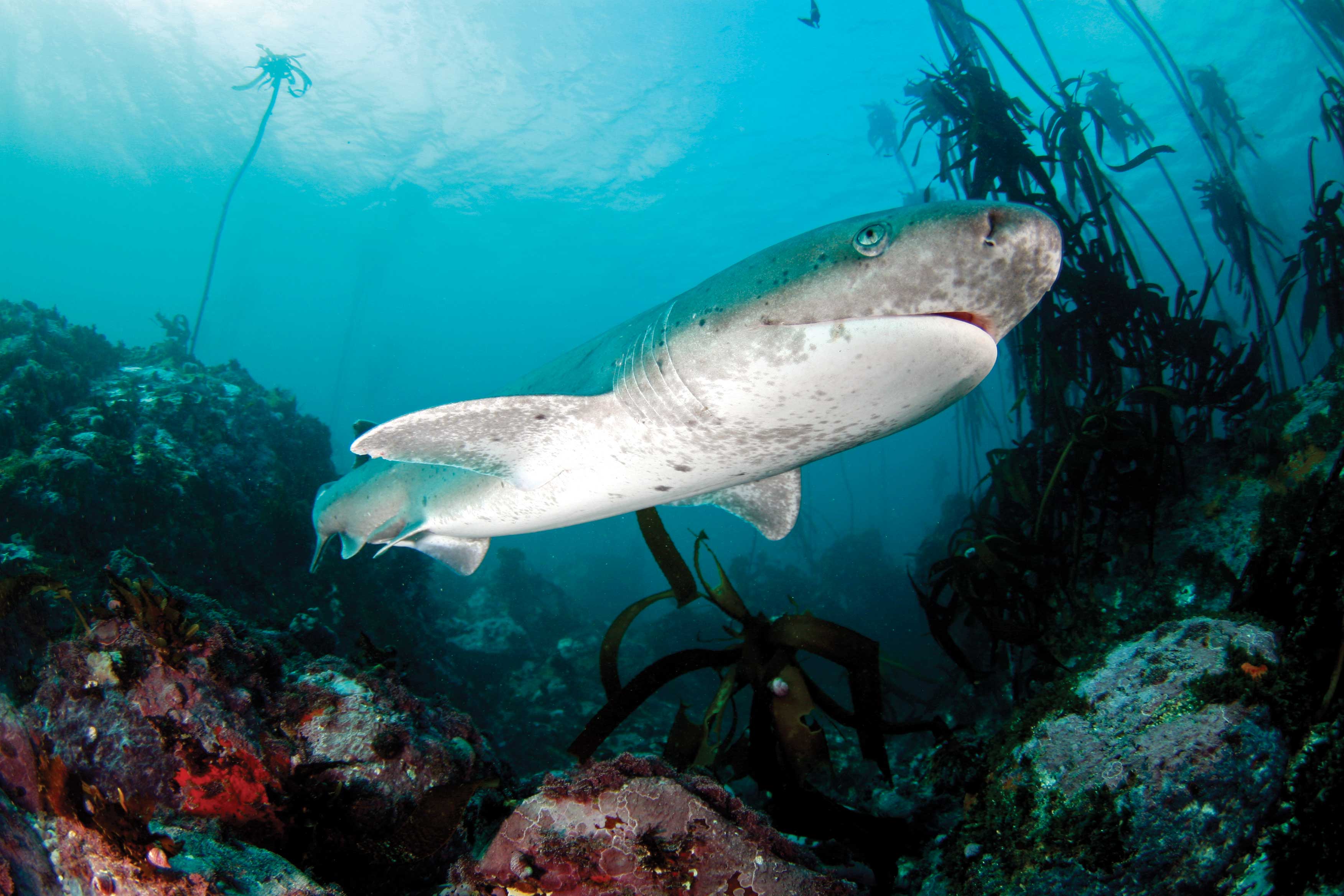To Eat or Be Eaten in False Bay
In a surprise coup, the ruling order in False Bay, South Africa has been toppled. The broadnose sevengill sharks (Notorhynchus cepedianus) and white sharks (Carcharodon carcharias) that once reigned at the top of the ocean food chain in this ecosystem have been replaced by a new super predator. A new scientific publication by Tamlyn Engelbrecht, Alison Kock and Justin O’Riain explores what’s happening now that orcas (Orcinus orca) have put sharks on their menu, and what this might mean for the functioning of False Bay’s ecosystem.

Mural of False Bay. Illustration © Save Our Seas Foundation
White sharks and broadnose sevengill sharks were considered apex predators in coastal waters; that is, animals at the top of the food chain that have few or no natural predators of their own. False Bay has long been known as an aggregation site for both species, and their presence in this region was significant because apex predators often structure whole ecosystems. When they’re lost to a system, the healthy functioning of that habitat is altered. But what happens when another predator comes in to upset the order of things, as we’ve come to know it?

A white shark is seen in front of the populated coastline of False Bay during a Shark Spotters research trip. Photo © Mac Stone | Save Our Seas Foundation
The increased presence of orca in False Bay since 2009 has had these three species jostling for their place at the top of the system, but the toothed whales were focused on a particular prey speciality: mammals, like the Indo-Pacific bottlenose and common dolphins that cruise these shallow seas. This all changed in 2015 and 2016 when sevengill shark carcasses were found drifting to the seafloor at Miller’s Point, a known area of concentration preferred by these sharks. It was the first time that orca had been known to prey on sevengill sharks in False Bay, in spite of having co-existed for some years, and the first record of a bizarre feeding tactic: only the sharks’ liver had been consumed. It seems the orcas ruptured the sharks’ pectoral girdles to gain access to the prized, fatty liver. Not surprisingly, the sevengill sharks fled the area and what was the largest known aggregation site in the world for the species was abandoned for a month.

A broadnose sevengill. Photo © Morne Hardenberg
Tamlyn, who is the research manager at the Shark Spotters programme, and her co-authors were puzzled by three particular questions:
1. Why would orca start targeting these sharks after years of seemingly co-existing in False Bay?
2. Why did the orca only want the livers of these sharks?
3. What are the consequences for the wider False Bay ecosystem if these events continue?
Rather than the orcas that have been documented in False Bay switching up their mammal prey preferences, it seems that these orcas might actually belong to a sub-group that are new arrivals to the bay. Port and Starboard, as the two supposed culprit orca have been dubbed, are shark specialists and highly transient; that is, they’re given to roaming and have been spotted at different locations along the South African coast.
Shark livers are large and very rich in fats, a high-energy win for orca on the hunt. This kind of specialisation has been documented elsewhere. In Argentina, broadnose sevengill shark carcasses washed up on the beach sans livers: they’d also fallen victim to orca.
Finally, it’s hard to predict what the repercussions will be on the broader False Bay ecosystem. For answers, Tamlyn and her colleagues looked to case studies overseas. In the North Pacific, orca began targeting sea otters (Enhydra lutris) after years of seeming co-existence. The loss of otters in this ecosystem caused ripple effects, with burgeoning sea urchin populations (a favoured otter snack) and shrinking kelp forests (the plant fodder voraciously grazed by these growing sea urchin numbers). And why might orca have turned to sea otters in the first place (or, in False Bay, to sharks)? One answer might lie in plummeting fish stocks and shark numbers, forcing orca to shift their preferred hunting grounds to areas closer inshore.
You can read the paper here.
**Reference: Engelbrecht, T. M., A. A. Kock, and M. J. O’Riain. 2019. Running scared: when predators become prey. Ecosphere 10(1): e02531. 10.1002/ecs2.2531
